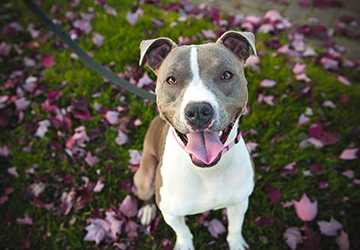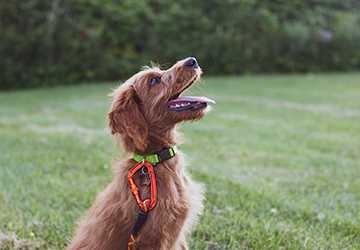Do you need help with training your dog? Does your furry friend sometimes seem stubborn, defiant, or just naughty? Do you wish your dog would stop jumping or pulling on the leash?
In this blog post, we'll talk about five essential positive reinforcement techniques for practical dog training. What are some common issues you face when training your dog? Keep reading this article; the following tips will help with those problems and more!
So, are you ready to better understand your new best friend?
5 Essential Positive Techniques for Dog Training
Now, explore five highly effective positive reinforcement techniques for training your furry friend. You'll learn simple, reward-based methods to teach your pup good manners and desirable habits.
Applying these correctly and consistently will lead to a happy, well-mannered pup!

1.Treat Rewarding The Classic
Giving treats is likely the first thing that comes to mind when you think of positive reinforcement for dogs. For good reason, this classic technique has stood the test of time - dogs love food! Keep tasty, bite-sized treats on you while training and immediately reward desired behaviours.
Have you tried using your dog's favourite healthy treats to reward good behaviour? It works wonders!
2.Verbal Praise
Simple verbal praise like Good Dog! in a happy, encouraging tone also qualifies as powerful positive reinforcement. Your pup wants your approval and showers them with praise when they demonstrate a behaviour you asked for or an act of good manners.
Praise your dog excitedly every time they follow a cue successfully. They'll pick up quickly on behaviours that earn your voiced approval!
3.Petting/Belly Rubs
For most dogs, affection serves as a highly desired reward. Gentle petting, back scratches, chin rubs, and belly scratches can reinforce good behaviour as powerfully as treats for many dogs. Use your dog's favourite type of affection as a training reward when you want to mix things up from edible treats.
Does your dog do tricks in exchange for a good belly rub? That's positive reinforcement working its magic!
4.Playing/Tossing Toys
Incorporating play into your dog training regimen utilizes your dog's natural energy and curiosity. Tossing a ball, playing tug of war, or initiating a play bow when your dog demonstrates a desired behaviour turns training into a rewarding game. This is an excellent reward option for high-energy dogs.
Have you noticed your dog bringing you their favourite toy and waiting for you to play? They're trying to get some positive reinforcement through playtime with you!

5.Taking Them on Walks
For most dogs, few things are more exciting than going on a walk. The sights! The smells! Take your dog training on the road by using the promise of a walk (or even a short jog) as a reward for mastering behaviours. But don't reward negative walking habits like lunging or pulling on the leash.
Does an excellent, brisk walk sound like a fantastic reward to your dog after practising training cues? Use that desire to your advantage!
Conclusion
You have the five most effective positive reinforcement techniques for dog training success there. Reward your pup often in their early foundation training; then, you can taper off the frequency over time. Consistency, patience and lots of positivity will serve you both well!
Now, you're equipped with multiple ways to positively reinforce good behaviour in your dog. Do you have any lingering questions about using these techniques? Check out the FAQs below!
FAQs
Q. How often should you positively reinforce desired behaviour in your dog?
Ans. During early training, you'll want to reward your furry friend every time they demonstrate the behaviour you asked for. This could be every few minutes in an initial session. Over many consistent training repetitions, you can taper off to rewarding every few times.
Q. What if your dog misbehaves between positive reinforcements?
Ans. If your pup is still learning a new skill, ignore minor misbehaviours. Redirect their attention to the training task to set them up for success. You don't want to reward undesirable habits.
Q. Should rewards always involve food or toys for your dog?
Ans. Not necessarily verbal praise, petting and play can serve as equally enticing rewards for most pups. Mix up reinforcers to keep your dog engaged and wanting to learn. Ultimately, discover which rewards motivate your unique friend!
-
Top 3 Dessert Trends Dominating 2023
The world of culinary arts is an ever-evolving landscape, with new flavors, techniques, and innovations making their way to our plates each year. As we dive deep into 2023, several mouth-watering popular desserts in 2023 have stolen the limelight, leaving foodies around the globe craving more. In this article, we uncover this year's top three dessert trends, detailing the global dessert innovations and sweet treat recipes that have taken center stage.
-
Top 10 Fish Tank Decor Ideas: Enhancing Your Aquatic Aesthetics
Fish tanks are like underwater windows to a world of wonder. Whether you're a seasoned fish keeper or just starting, decorating your fish tank can turn it into a mesmerizing underwater paradise. You don't need a degree in marine biology or a fancy budget for this. Let's dive into the top 10 fish tank decor ideas to make your aquatic friends feel right at home.
-
Where to Source Wild Foraged Ingredients
Foraging for wild ingredients can be an esoteric and enriching activity, not solely because of the unparalleled freshness of the ingredients but also because of the adventure inherent in the quest. This compendium will elucidate the essentials of a wild foraging guide, the best foraged foods, and wild ingredients recipes that will elevate your culinary repertoire. Whether you're a neophyte or a seasoned forager, this article will offer invaluable insights into sourcing and utilizing wild ingredients.